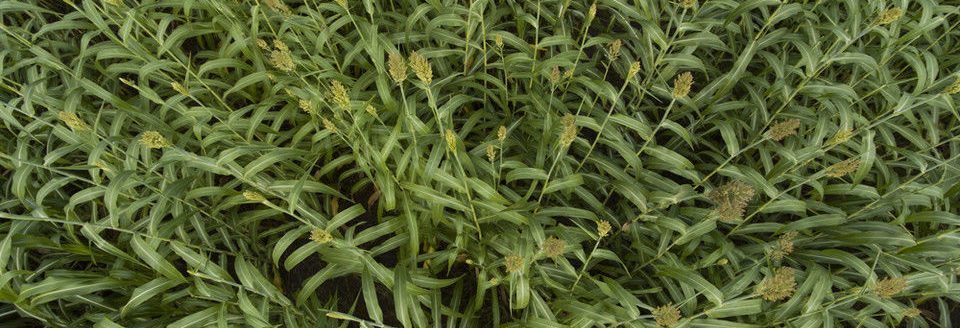Tom Willis calls it a Cinderella story—how an itchy, secondary crop rose to the top.
Willis, CEO of Conestoga Energy Partners and the keynote speaker at Sorghum U, Jan. 8, recalled when he moved to western Kansas 14 years ago, he had never heard of sorghum. He even thought those calling it by its nickname—milo—were just referring to another unfamiliar crop.
Back then, most thought of sorghum as a second-rate crop, he said.
“It was kind of treated like a redheaded stepchild,” Willis said, adding that his employees at the time told him “sorghum doesn’t deserve bin space, put it outside.”
But it didn’t take Willis long to learn of sorghum’s water-sipping properties— both as a businessman who needs grain for his ethanol plants and from the standpoint of a father who wants his son to have a future on his farm in southern Finney County, Kansas.
The Ogallala Aquifer is the lifeblood of semiarid landscape. The economy around it—one centered on crops, cattle, packing plants and fuel—couldn’t be sustained without water.
The aquifer is dropping at an alarming rate, Willis said. Wells on his farm declined from 600 gallons a minute when he bought the land a half dozen years ago to 300 gal- lons a minute.
So he did something unprecedented in southwest Kansas—he began to switch his operation from water-intensive corn to sorghum, a reliable, drought-tolerant crop that uses fewer inputs.
“I don’t know if everyone understands the impact that aquifer has, but anything that can be done to reduce the trauma on it has to be done, because once it is dead, once it is empty, it’s too late,” he said.
Redheaded stepchild
Willis sees sorghum as a tool to extend the life of the Ogallala and to the economic success of his ethanol plants. The two plants in Liberal and Garden City use 75 million bushels of grain annually—of which 40 million bushels is sorghum.
Sorghum’s transformation occurred in the past decade. Among the boosts to the crop’s ego was demand from California, which was working to decrease its carbon footprint. Sorghum was found to have similar conversion properties to corn and produces even lower-carbon ethanol.
Willis was seeing a premium from California’s fuel demand. He said, at one point, he shipped up to 120 million gallons a year.
But, at first, the word wasn’t getting out to Kansas farmers.
“We would post a 30-cent premium,” he said but added that at the regional elevators, “I never saw the basis move one dime. I’m trying to get more sorghum makers. I’m throwing a 30-cent premium out there and the producers aren’t seeing it.”
Today, a good share of Willis’ ethanol production is from sorghum. In fact, he said his ethanol plants are the biggest user of sorghum in the United States.
Meanwhile, with wheat allergies and sorghum being a non-genetically modified organism, food-grade sorghum sales have boomed.
Analyzing his budget model, Willis realized he could make as much on sorghum as corn, without as much financial risk.
On his farm south of Garden City, Willis said he could raise a 150-bushel sorghum crop on 10 inches of moisture, compared to 24 inches on corn.
Sorghum promoter
Willis’ efforts are working.
Willis implemented a Water Technology Farm on his land two years ago. A collaboration between the state of Kansas and public and private enterprise, the farm is a model for water savings-showcasing technology like mobile drip irrigation systems and moisture sensors. Today, the state has several technology farms across the region.
By implementing a sorghum/soybean rotation and adding in forages, Willis set his farm’s water reduction goal at 30 percent. In the first two years of the program, he exceeded the target, hitting 45 percent.
“When I equalize everything out, when I take into account inputs, outputs and yields, we see no difference to what would be our bottom line,” Willis said.
He wants to farm to be there for his son and his family, who recently came back to the farm. But without the Ogallala, it would be harder to make a living on the semi-arid terrain.
“Without it, kiss the dairy business goodbye. Kiss the feeding business goodbye. Kiss the packing houses goodbye. Kiss agriculture goodbye and, ladies and gentlemen, if you kiss all those things goodbye, kiss your communities goodbye.
“This aquifer thing is real,” he said.
Amy Bickel can be reached at 620-860-9433 or [email protected].



